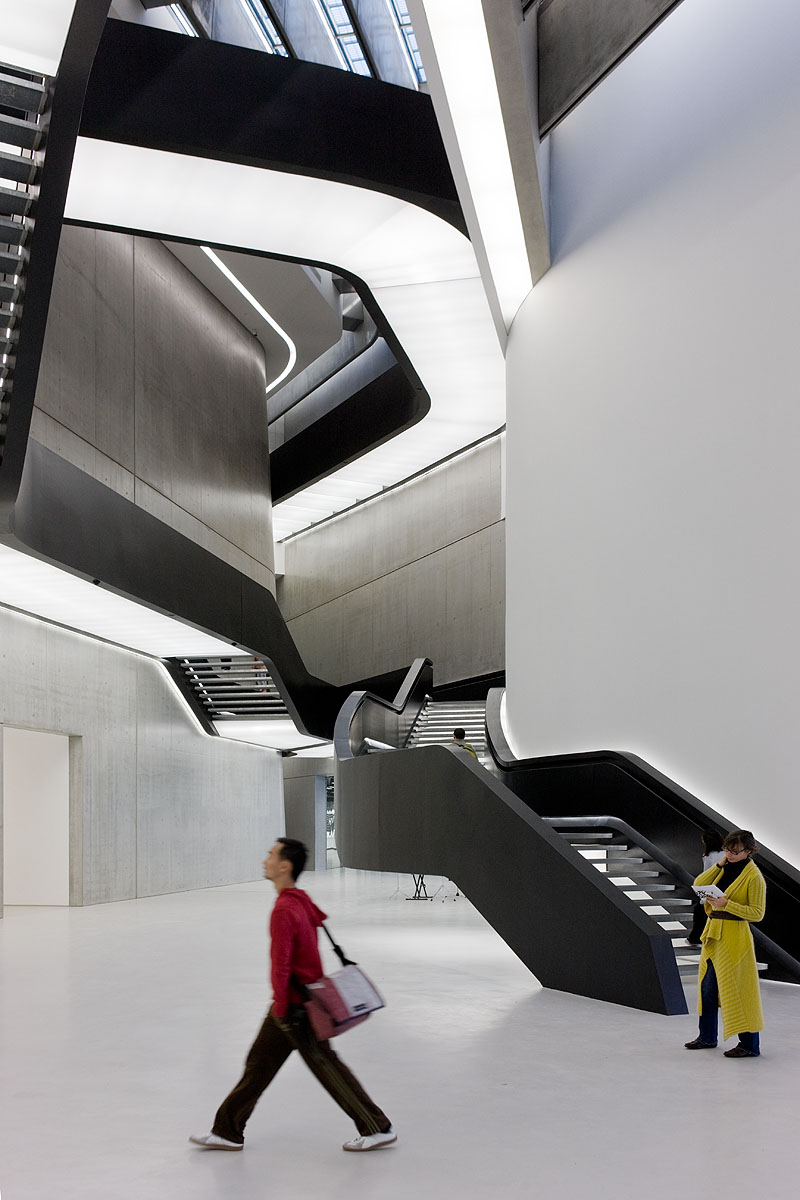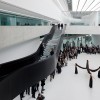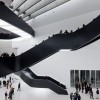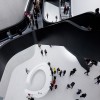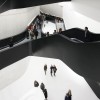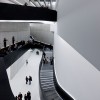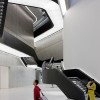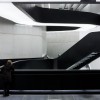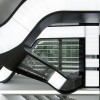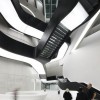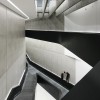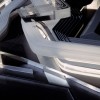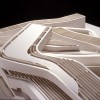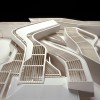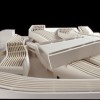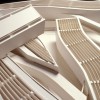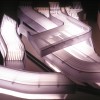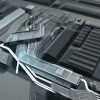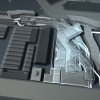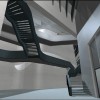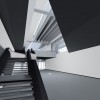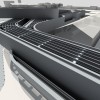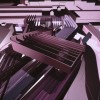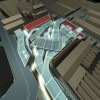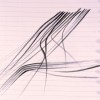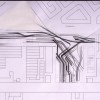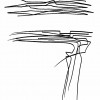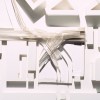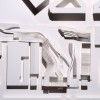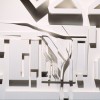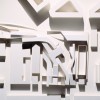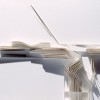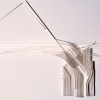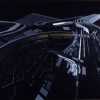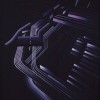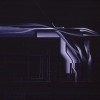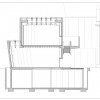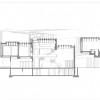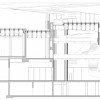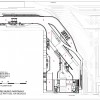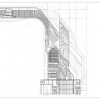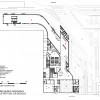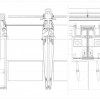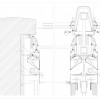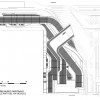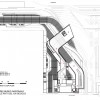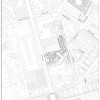Zaha Hadid's MAXXI - National Museum of XXI Century Arts
Architectural Concept and Urban Strategy: Staging the Field of Possibilities
The MAXXI addresses the question of its urban context by maintaining a reference to the former army barracks. This is in no way an attempt at topological pastiche, but instead continues the low-level urban texture set against the higher level blocks on the surrounding sides of the site. In this way, the MAXXI is more like an ‘urban graft’, a second skin to the site. At times, it affiliates with the ground to become new ground, yet also ascends and coalesces to become massive where needed.
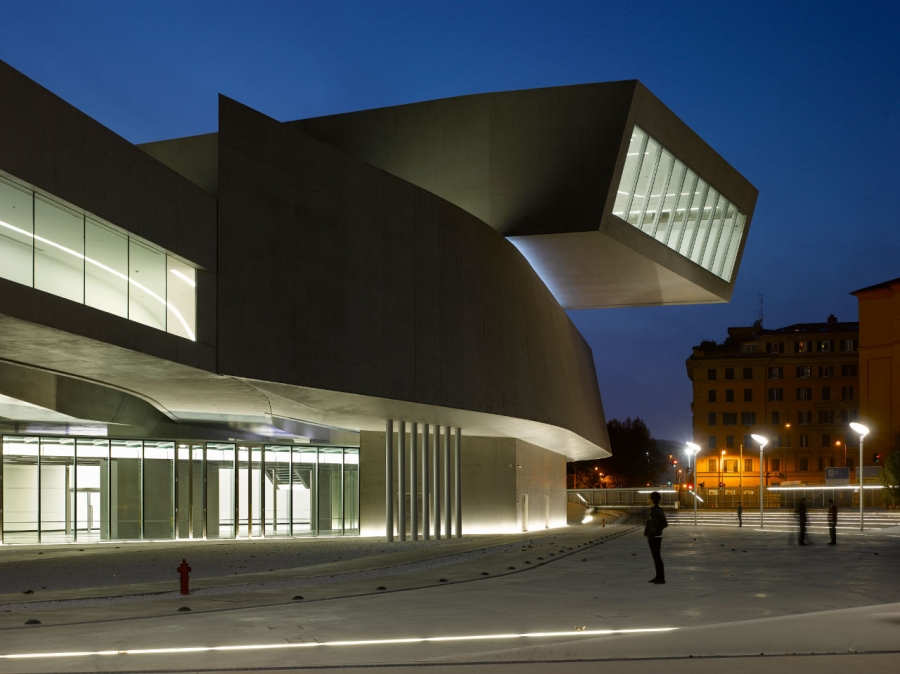 Zaha Hadid's MAXXI
Credit: Roland Halbe
Zaha Hadid's MAXXI
Credit: Roland Halbe
The entire building has an urban character: prefiguring upon a directional route connecting the River to Via Guido Reni, the Centre encompasses both movement patterns existing and desired, contained within and outside. This vector defines the primary entry route into the building. By intertwining the circulation with the urban context, the building shares a public dimension with the city, overlapping tendril-like paths and open space. In addition to the circulatory relationship, the architectural elements are also geometrically aligned with the urban grids that join at the site. In thus partly deriving its orientation and physiognomy from the context, it further assimilates itself to the specific conditions of the site.
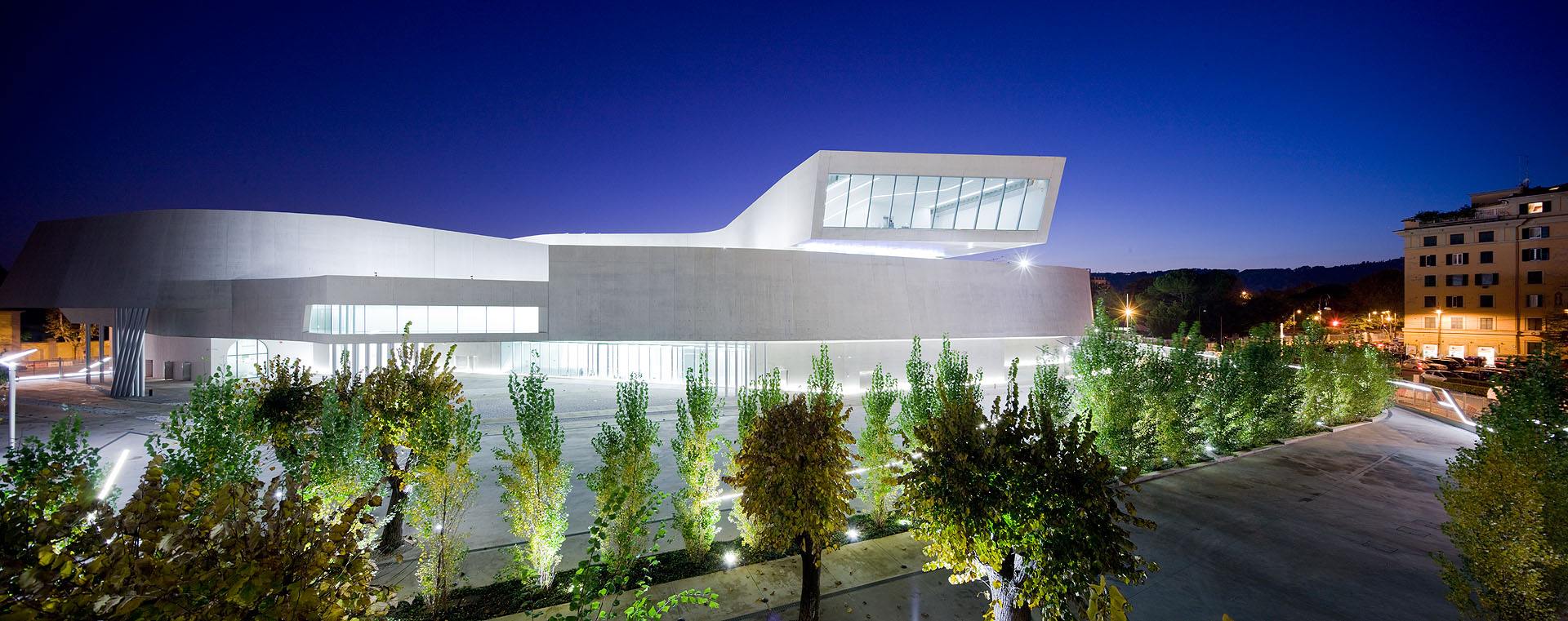
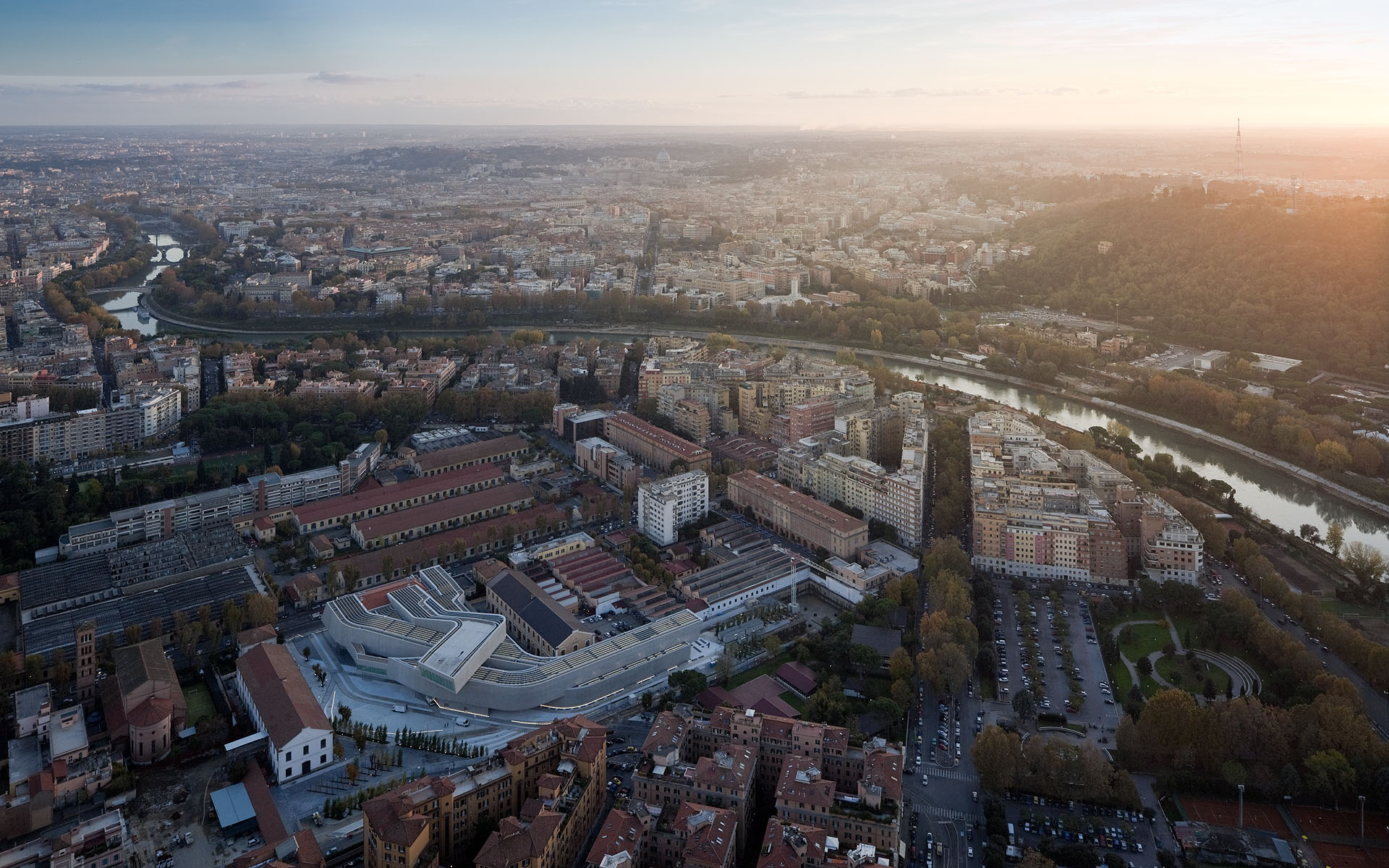
Space vs. Object
Our proposal offers a quasi-urban field, a 'world' to dive into rather than a building as signature object. The campus is organized and navigated on the basis of directional drifts and the distribution of densities rather than key points. This is indicative of the character of the MAXXI as a whole: porous, immersive, a field space. An inferred mass is subverted by vectors of circulation. The external as well as internal circulation follows the overall drift of the geometry. Vertical and oblique circulation elements are located at areas of confluence, interference and turbulence.
The move from object to field is critical in understanding the relationship the architecture will have to the content of the artwork it will house. While this is further expounded by the contributions of our Gallery and Exhibitions experts, it is important here to state that the premise of the architectural design promotes a disinheriting of the ‘object’ orientated gallery space. Instead, the notion of a ‘drift’ takes on an embodied form. The drifting emerges, therefore, as both architectural motif, and also as a way to navigate experientially through the museum. It is an argument that for art practice is well understood but in architectural hegemony has remained alien. We take this opportunity, in the adventure of designing such a forward looking institution, to confront the material and conceptual dissonance evoked by art practice since the late 1960s. The path led away from the ‘object’ and its correlative sanctifying, towards fields of multiple associations that are anticipative of the necessity to change.
Institutional Catalyst
As such, it is deemed significant that in configuring the possible identity of this newly established institution (housing both Art and Architecture), with its aspiration toward the polyvalent density of the 21st century, conceptions of space and indeed temporality are reworked. Modernist Utopian space fuelled the white ‘neutrality’ of most 20th century museums. Now, this disposition must be challenged, not simply out of wilful negation, but by the necessity for architecture to continue its critical relationship with contemporary social and aesthetic categories. Since absolutism has been indefinitely suspended from current thought on the issue of art presentation, it is towards the idea of the ‘maximising exhibition’ that we gravitate. In this scenario, the MAXXI makes primary the manifold possibilities for the divergence in showing art and architecture as well as catalysing the discourse on its future. Again, the ‘signature’ aspect of an institution of this calibre is sublimated into a more pliable and porous organism that promotes several forms of identification at once.
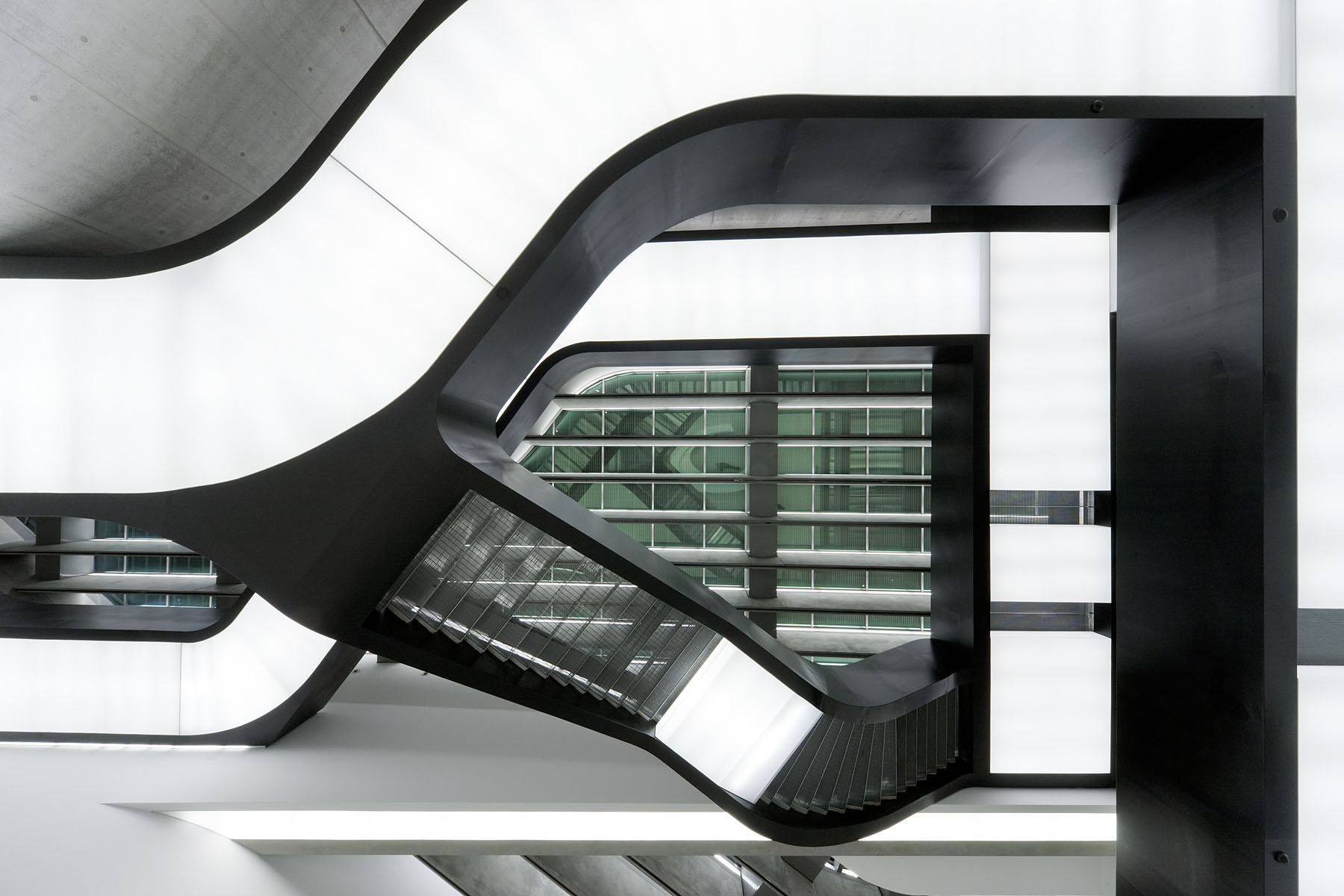
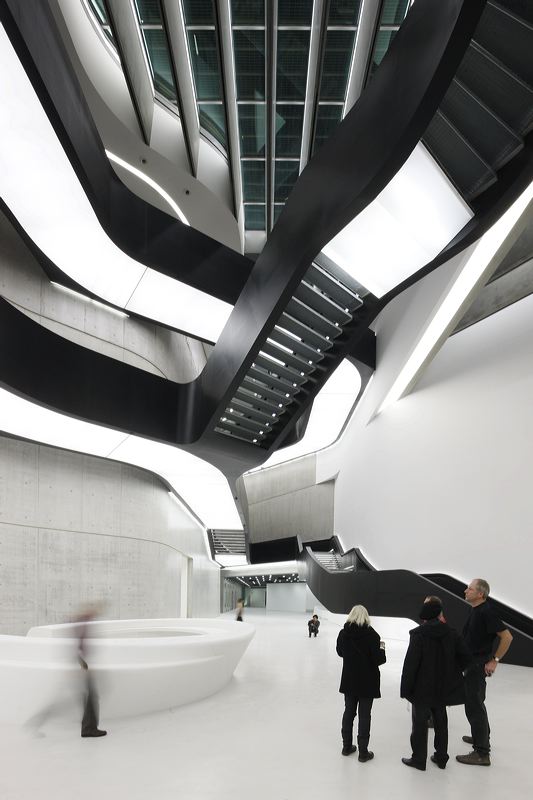
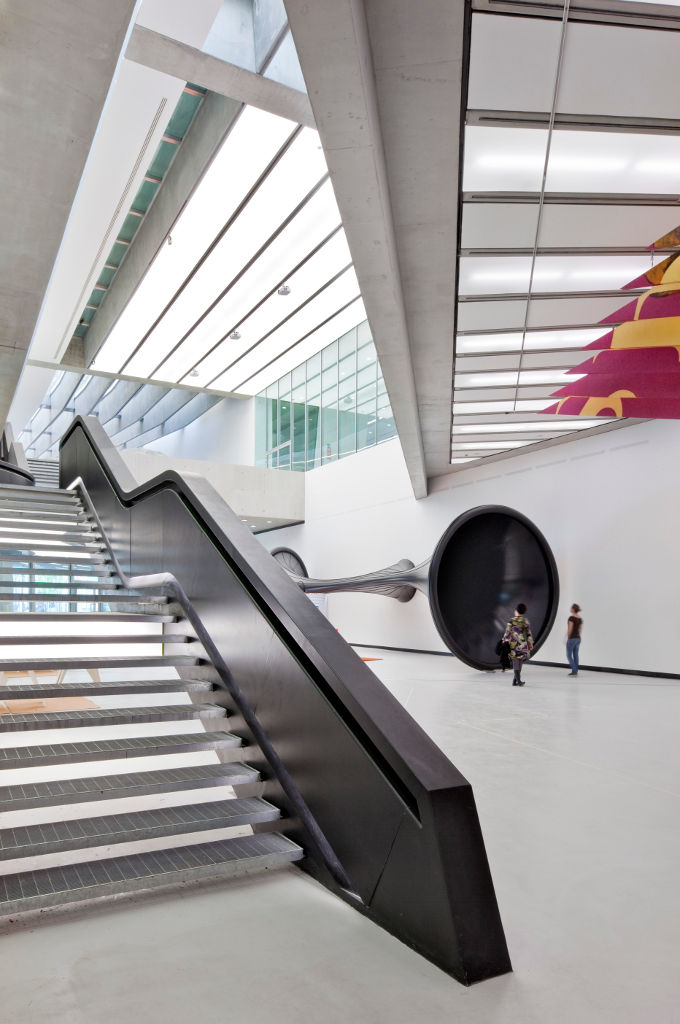
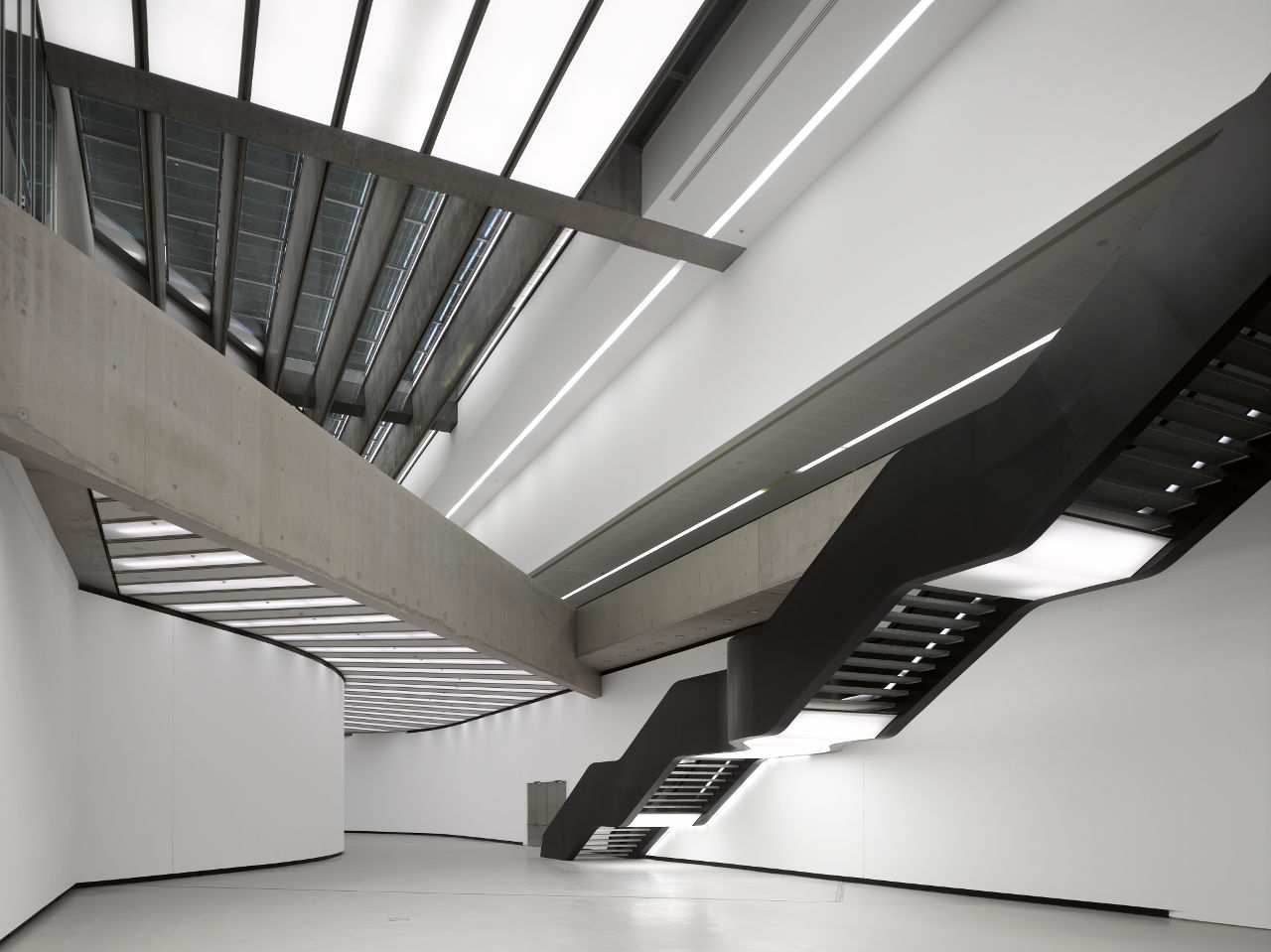
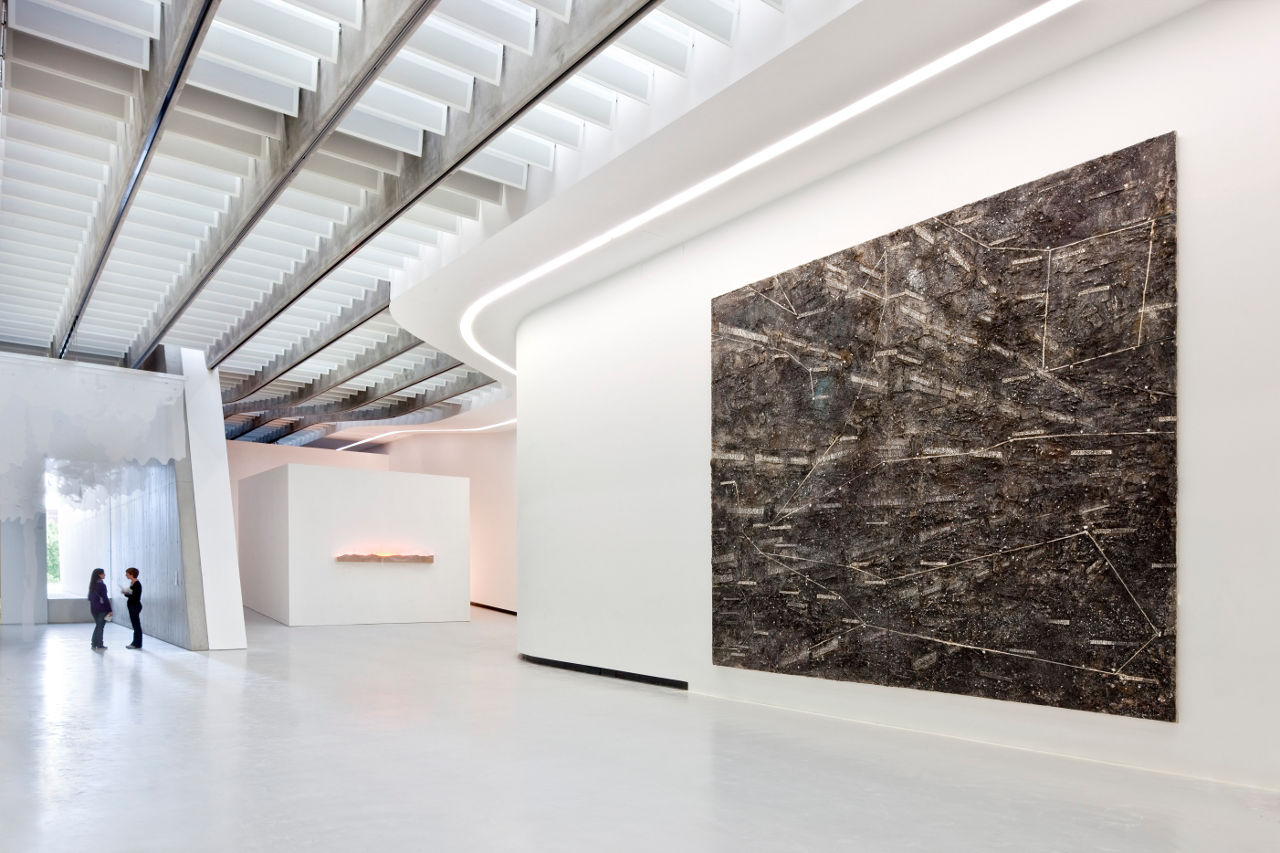
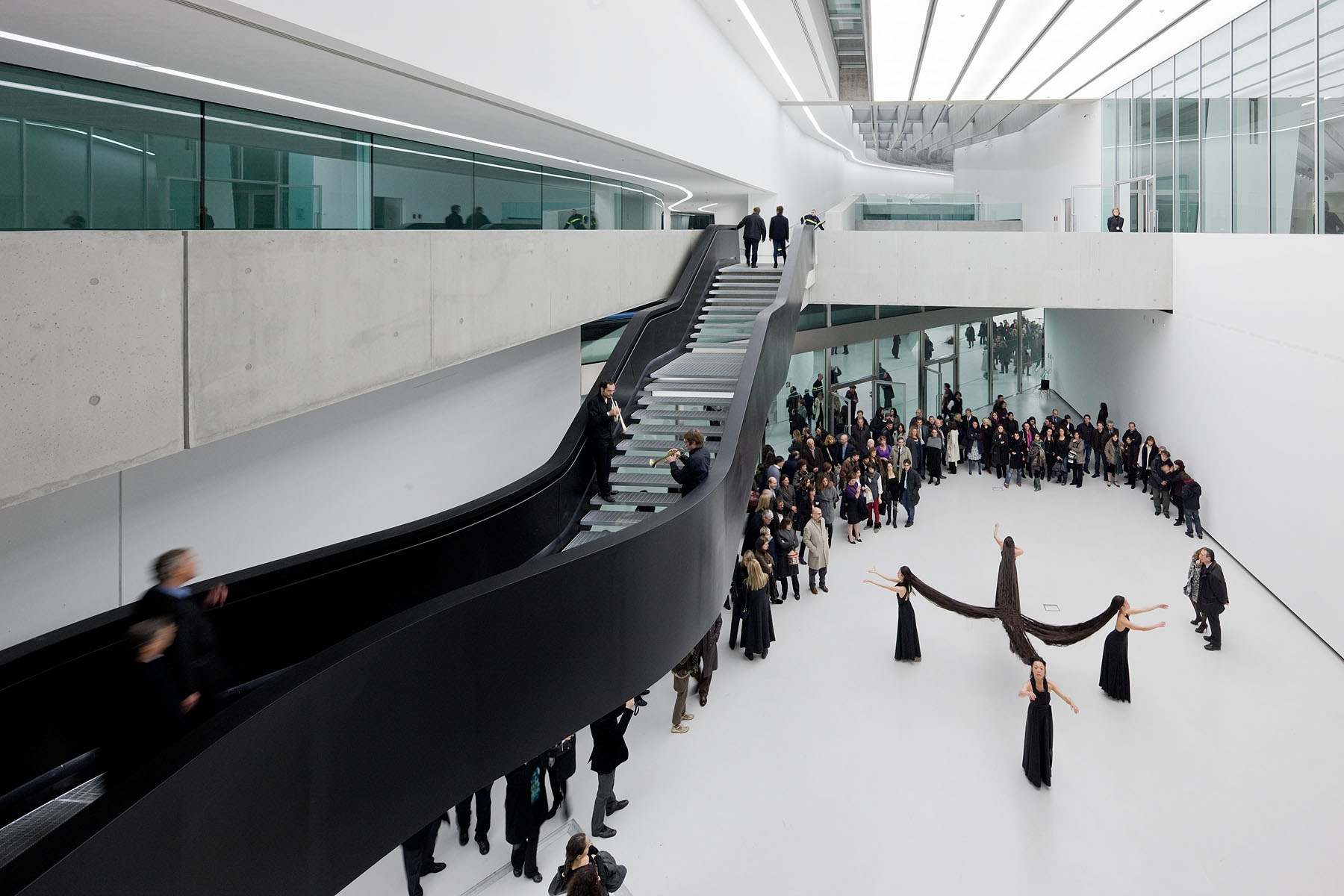
Walls/Not Walls: Towards a Contemporary Spatiality
In architectural terms, this is most virulently executed by the figure of the ‘wall’. Against the traditional coding of the ‘wall’ in the museum as the privileged and immutable vertical armature for the display of paintings, or delineating discrete spaces to construct ‘order’ and linear ‘narrative’, we have created a critique of it through its emancipation. The ‘wall’ becomes the versatile engine for the staging of exhibition effects. In its various guises -- solid wall, projection screen, canvas, window to the city -- the exhibition wall is the primary space-making device. By running extensively across the site, cursively and gesturally, the lines traverse inside and out. Urban space is coincidental with gallery space, exchanging pavilion and court in a continuous oscillation under the same operation. And further deviations from the Classical composition of the wall emerge as incidents where the walls become floor, or twist to become ceiling, or are voided to become a large window looking out. By constantly changing dimension and geometry, they adapt themselves to whatever curatorial role is needed. By setting within the gallery spaces a series of potential partitions that hang from the ceiling ribs, a versatile exhibition system is created. Organizational and spatial invention are thus dealt with simultaneously amidst a rhythm found in the echo of the walls to the structural ribs in the ceiling that also filter the light in varying intensities.
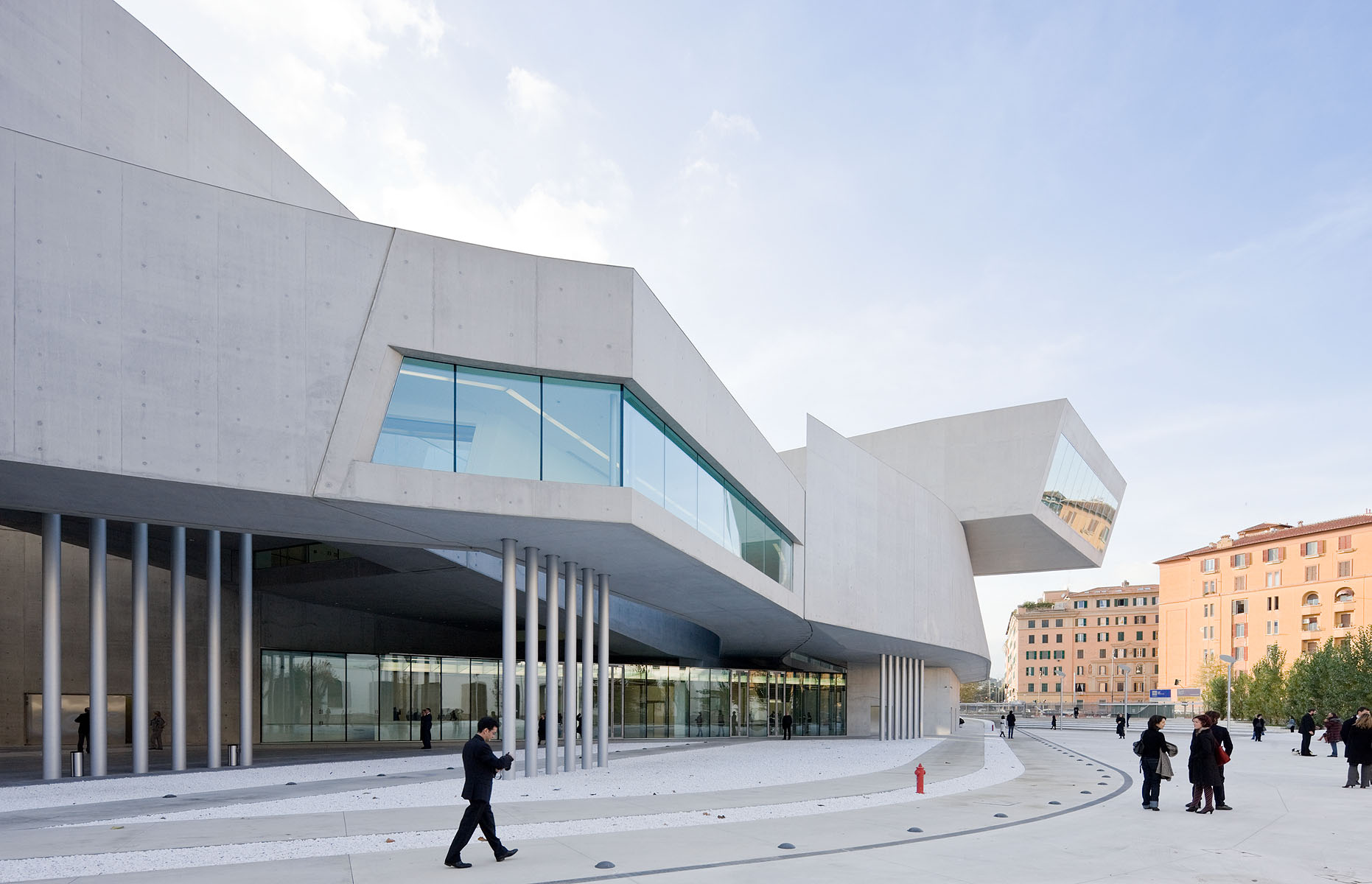
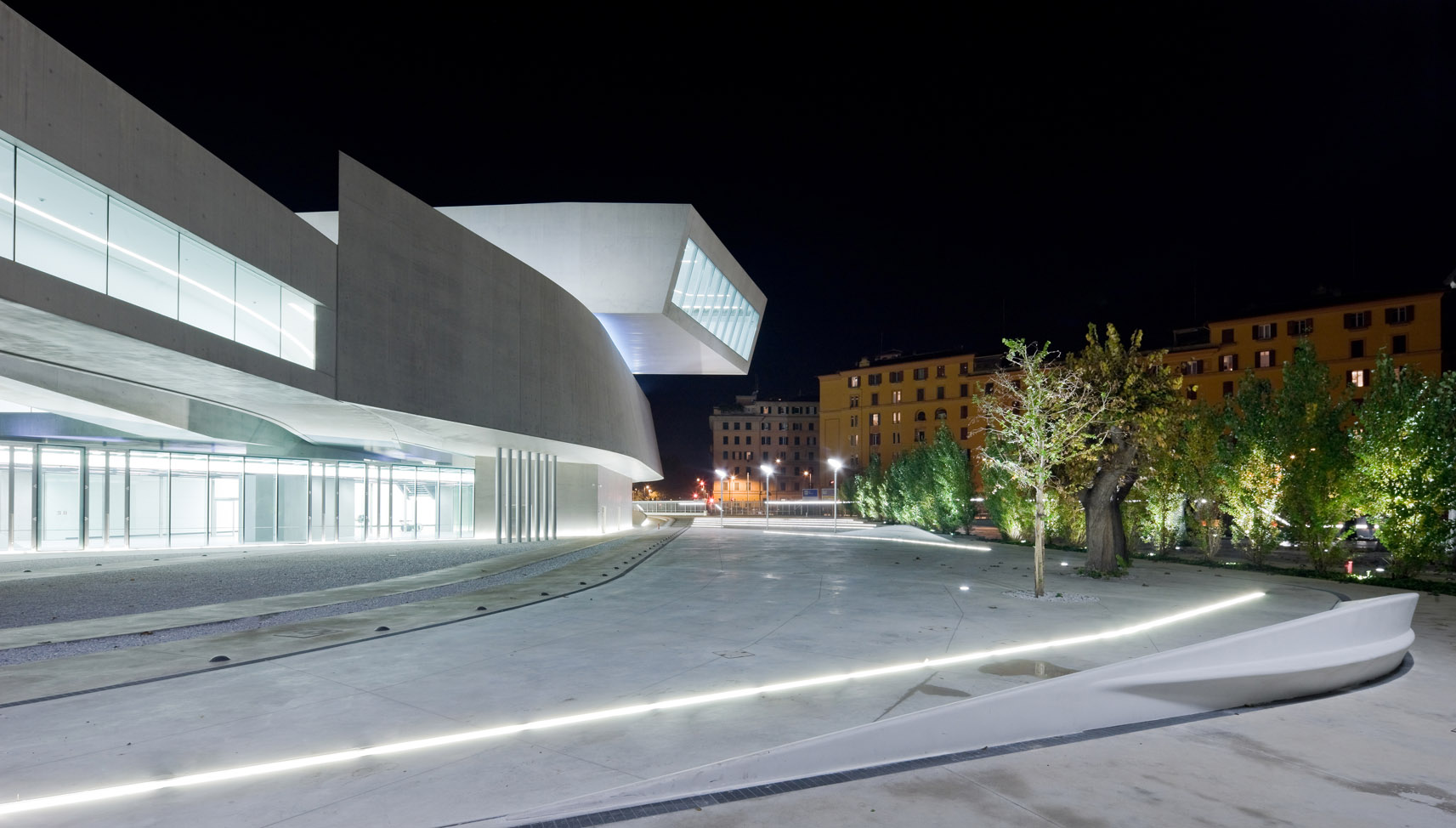
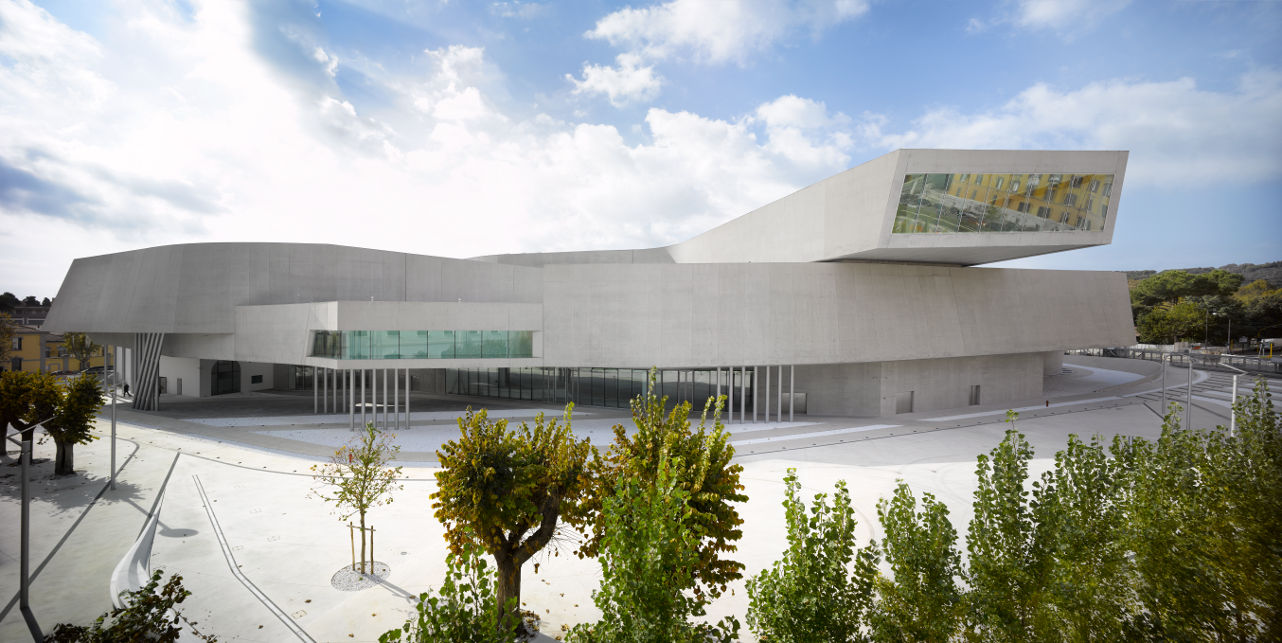
Stage for Thought | Art as Drama
It is in this way that the architecture performs the ‘staging’ of art, with moveable elements that allow for the drama to change. ‘Sets’ can be constructed from the notional elements of the gallery spaces. These are attuned to the particularities of the exhibition in question, materialising or dematerialising accordingly.
The drift through the MAXXI is a trajectory through varied ambiences, filtered spectacles and differentiated luminosity. Whilst offering a new freedom in the curators’ palette, this in turn digests and recomposes the experience of art spectatorship as liberated dialogue with artefact and environment.

